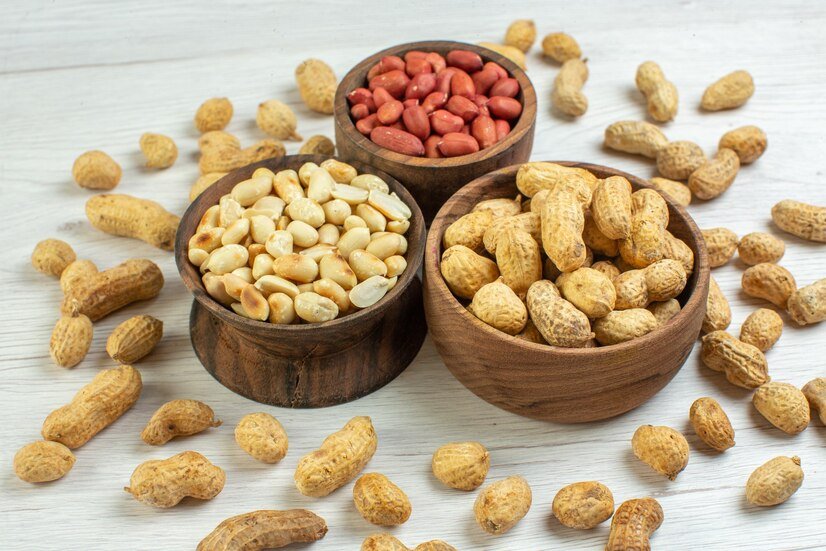Peanuts are more than just a crunchy snack or a key ingredient in peanut butter. These versatile legumes have taken center stage in kitchens and cultures worldwide, from savory dishes to sweet treats. With over 25 million tons produced annually, they’ve become a global favorite for their affordability, nutritional benefits, and delightful versatility. But did you know there are several types of peanuts, each with unique characteristics?
Whether you’re a casual snacker, a home cook, or a health enthusiast, understanding the types of peanuts can elevate your appreciation for this beloved legume. In this article, we’ll dive into the different types of peanuts, their uses, and even some tips on how to select the best ones for your needs.
What Are the Different Types of Peanuts?
Peanuts may look similar on the outside, but they vary significantly in flavor, size, texture, and even how they’re grown. The main types of peanuts include:
- Runner Peanuts
- Virginia Peanuts
- Spanish Peanuts
- Valencia Peanuts
Each type serves a different purpose, from creating creamy peanut butter to roasting for snacks. Let’s break them down further.
Runner Peanuts: The All-Around Favorite
Runner peanuts are the most commonly grown variety in the United States, accounting for nearly 80% of production. Their uniform size makes them ideal for processing, particularly for peanut butter production.
Characteristics of Runner Peanuts:
- Medium-sized, with a balanced flavor and texture.
- High in monounsaturated fats, making them a heart-healthy choice.
- Perfect for creating smooth, creamy peanut butter.
If you’re looking for a decadent way to enjoy peanut butter, try this mouthwatering peanut butter fudge frosting recipe. It’s a delightful addition to cakes, brownies, or as a sweet treat on its own.
Popular Uses:
- Peanut butter spreads (like those found in Lance peanut butter crackers).
- Candy bars, cookies, and baked goods.
- Snack packs of roasted and salted peanuts.
Virginia Peanuts: The Gourmet Choice
Known as the “ballpark peanuts,” Virginia peanuts are prized for their large size and exceptional flavor. They’re often roasted in shells and are a favorite at sporting events and festivals.
Characteristics of Virginia Peanuts:
- Extra-large kernels with a slightly crunchy texture.
- Available in both in-shell and shelled varieties.
- The rich, nutty flavor when roasted.
Popular Uses:
- Roasted and flavored snacks.
- Gourmet peanut mixes and gift baskets.
- Boiled peanuts, a Southern delicacy.
Spanish Peanuts: The Bold and Nutty Snack
Spanish peanuts are small but mighty. Their distinct reddish-brown skin and robust flavor make them a popular choice for candied peanuts and snacks.
Characteristics of Spanish Peanuts:
- Smaller kernels with a high oil content.
- Bold, nutty flavor that intensifies when roasted.
- Often used for peanut oil production.
Popular Uses:
- Candied peanuts and peanut brittle.
- Fried or roasted peanuts with spices.
- Peanut oil for cooking and frying.
Valencia Peanuts: The Sweetest Variety
Valencia peanuts are known for their naturally sweet flavor, making them ideal for snacks and natural peanut butter. They are often grown in the Southwest, particularly in New Mexico.
Characteristics of Valencia Peanuts:
- Smaller pods, usually containing three to four kernels.
- A sweet, nutty flavor with a delicate texture.
- Preferred for natural, additive-free peanut butter.
Popular Uses:
- Boiled peanuts (a summer favorite in the South).
- All-natural peanut butter.
- Healthy snack packs for kids and adults.
How to Select the Right Type of Peanut for Your Needs

Choosing the best peanut depends on your intended use:
- For Peanut Butter: Runner or Valencia peanuts are ideal due to their creamy texture and sweet flavor.
- For Snacking: Virginia peanuts are a top choice for roasted, salted, or boiled varieties.
- For Cooking Oil: Spanish peanuts, with their high oil content, are excellent for extracting flavorful peanut oil.
What Type of Fats Are in Peanuts and Peanut Butter?
One of the reasons peanuts are considered a healthy snack is their fat profile. Peanuts contain mostly monounsaturated and polyunsaturated fats, which are heart-healthy fats known to lower bad cholesterol (LDL).
In products like lance peanut butter crackers, the fats are balanced to create a creamy, satisfying snack. Be mindful of added sugars and oils in processed peanut products, but overall, the natural fats in peanuts contribute to long-lasting energy and satiety.
Fun Facts About Peanuts You Might Not Know
- Peanuts aren’t technically nuts; they’re legumes, like beans and lentils.
- The world’s largest peanut butter factory produces 250,000 jars daily!
- Boiled peanuts are the official snack of South Carolina.
- Peanut shells can be used for composting or creating eco-friendly products.
Why Peanuts Should Be a Pantry Staple
From their versatility to their nutritional benefits, peanuts are a true kitchen superhero. With so many types to choose from, there’s a peanut variety for every occasion, whether you’re whipping up homemade peanut butter, snacking on roasted Virginia peanuts, or experimenting with peanut oil in your recipes.
If you’re looking for creative and practical ways to include peanuts in your everyday meals, check out this guide on how to use peanuts in your daily life. You’ll find plenty of inspiration to make peanuts a staple in your kitchen.
So, the next time you’re at the store, take a closer look at the peanut aisle and try something new. And don’t forget to share this guide with your fellow peanut lovers—they’ll thank you for it!
